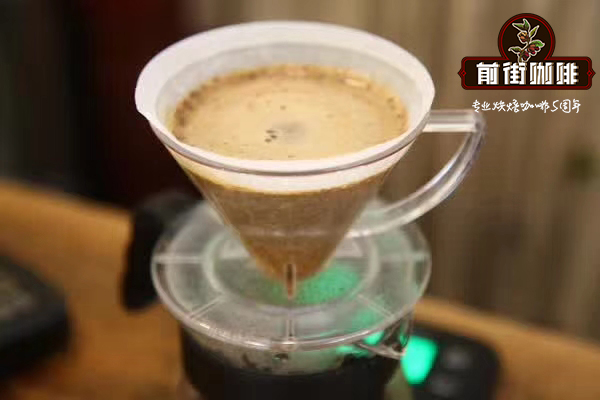What is the quality of Southeast Asian boutique coffee beans? Vietnam, Philippines, Thailand, coffee beans taste good?
Asia is also a coffee-producing region, and internationally famous coffee beans include Indonesia's Mantenin and Baoshan small-grain coffee in Yunnan, China. But in fact, Southeast Asia has been the main coffee producing area in Asia, in addition to Indonesia, there are countries such as Vietnam.
Indonesia is one of the first countries in the world to grow coffee on a large scale.
At the same time, it has also led to coffee cultivation in Southeast Asian countries, such as the Philippines, Malaysia and so on.
However, Arabica is not resistant to disease. in the 1880s, when leaf rust broke out in coffee trees, the Dutch immediately introduced Robsta coffee, which has high disease resistance but poor flavor, which is stronger in skin, disease and insect pests. As a result, the Indonesian coffee industry has survived the difficulties.
Since then, robusta coffee has replaced Arabica as the main coffee crop in Southeast Asia. The advantages of its coffee are also its disadvantages:
First of all, the strong ability of disease resistance and insect resistance is due to the high content of chlorogenic acid and caffeine in this coffee breed. When it comes to the taste, it suffers from bitterness but lacks fragrance and acid, and is mellow and lively. Robusta coffee is mostly used in instant coffee and blended coffee production.
As the second largest coffee producer in Asia, 90% of Indonesia's coffee production is Robusta (mainly from Java) and 10% is Arabica. There are many famous products in Arabica, Indonesia, such as Sumatra, Mantenin of the two lakes, Sulawesi Tonaga, and unique civet coffee.

Other coffee-producing countries in Southeast Asia are divided:
However, the Philippines has characteristics unmatched by other countries. It has four different varieties of coffee: Arabica, Robusta, Liberica beans and Exxersa beans. Malaysia does not produce much coffee, mainly Robusta and Liberika beans (90%).
Liberica is a close relative of Robbosa beans, with a large size and high caffeine concentration, known as elephant beans.
However, the thick skin of elephant beans is not easy to deal with, thus limiting its performance in the international coffee industry. now in the global coffee market, elephant bean libica accounts for less than 2% of Malaysian exports of coffee, coffee powder and instant coffee are important, including the famous "white coffee".
The output of coffee in Malaysia is small. Every year, they import a large number of coffee beans, match them with coffee beans of various flavors, and then bake them at medium and low temperatures; in the process of roasting, they will add edible oil and sugar to produce fragrant "black coffee" and "white coffee (roasted without sugar)" coffee beans are added with added value and then exported abroad. Malaysia has achieved a trade surplus in the import and export of coffee.
Thailand did not begin to grow and export coffee until the 1970s. It is now the third largest exporter of robusta beans in Asia. Vietnamese coffee was deeply influenced by French coffee culture, and coffee cultivation was driven by the French in 1857. In 1920, the French took Dorothy as the core to promote the cultivation of coffee estates and achieved results. More than 97% of the coffee produced in Vietnam is robusta beans. In addition to supplying raw beans to the world, Vietnam also produces instant coffee.
Myanmar: in 1930, Myanmar began to grow coffee in its eastern Shan State (Shan State) at an altitude of 1000-1200 meters. The variety is Arabica. Whole Foods of the United States bought Burmese boutique coffee in 2016, but the daily favorite drinks of Burmese are tea and instant coffee.
Cambodia: coffee, produced in the red soil above 800 meters above sea level in Mondokiri province, is Arabica coffee.
Important Notice :
前街咖啡 FrontStreet Coffee has moved to new addredd:
FrontStreet Coffee Address: 315,Donghua East Road,GuangZhou
Tel:020 38364473
- Prev

How about Southeast Asian Indonesian Manning boutique coffee beans? Why does it smell like smoked herbs?
If the world's boutique coffee is distinguished by continent, Africa, America, Oceania and Asia. The famous producing country of Africa is Ethiopia, the famous producing country of America is Panama, the famous producing area of Oceania is Papua New Guinea, and the famous producing area of Asia is Indonesia. As the representative of Asia, the famous India
- Next

What is the extraction of coffee? the production process of coffee beans. What plants do coffee beans come from?
What is the source of coffee? Coffee and tea can be regarded as the three biggest drinks in the world. Many friends come into contact with liquid ready-made or instant coffee powder every day, which leads to a misunderstanding that coffee is made from a certain substance. In fact, the formation of coffee liquid is actually a phenomenon that the substance dissolves in water.
Related
- Guji coffee producing area of Guji, Ethiopia: Humbela, Shakiso, Wulaga
- What is the most expensive variety of Qiloso in BOP multi-variety group?
- How to store the coffee beans bought home?
- Why are Yemeni coffee beans so rare now?
- Ethiopian Sidamo all Red Fruit Sun Sun Santa Vini Coffee beans
- SOE is mostly sour? What does it mean? Is it a single bean? what's the difference between it and Italian blending?
- Is Italian coffee beans suitable for making hand-brewed coffee?
- How to choose coffee beans when making cold coffee? What kind of coffee beans are suitable for making cold coffee?
- Just entered the pit to make coffee, what kind of coffee beans should be chosen?
- Can only Japan buy real Blue Mountain Coffee? What are authentic Jamaican Blue Mountain coffee beans?

